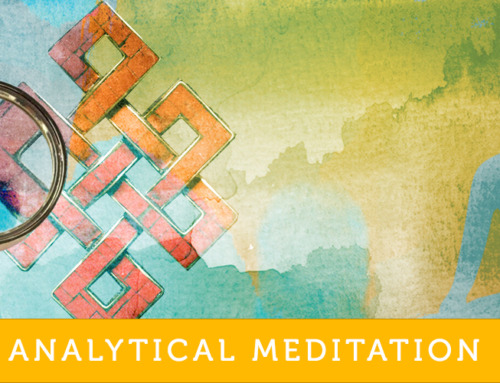Manifest & Hidden Phenomena
This excerpt is copyrighted material, please do not use or copy without written permission from Nitartha Publications.
This excerpt is from our sourcebook we use for the Mind & Its World IV course. This course is an extensive exposition of the Sautrantika philosophical tradition, based on the expanded version of The Gateway that Reveals the Philosophical Traditions to Fresh Minds root text.
If you are curious about this course, learn more here: Nitartha Online Campus.
MANIFEST & HIDDEN PHENOMENA
ACHARYA SHERAB GYALTSEN
The division of objects of comprehension is twofold: manifest phenomena and hidden phenomena.
MANIFEST PHENOMENA
A manifest phenomenon is something that can be actually realized through direct valid cognition. For example, the glass in front of me is the basis or object of comprehension that can be cognized by direct valid cognition and so is called a manifest phenomenon. Between hidden phenomena and manifest phenomena, all objects cognized by direct valid cognition must be manifest phenomena. Therefore, that which is an object of direct valid cognition is necessarily a manifest phenomenon. Manifest phenomenon, thing, and specifically characterized phenomenon are equivalent.
Manifest phenomenon, thing, and specifically characterized phenomenon are equivalent.
HIDDEN PHENOMENA
The definition of a hidden phenomenon is “that which can be actually realized through inferential valid cognition.” Hidden phenomena are divided into two categories:
slightly hidden phenomena and very hidden phenomena.
That which is a hidden phenomenon is not necessarily a generally characterized phenomenon. There are things that are hidden phenomena that can be specifically characterized phenomena. For example, we can say “Halifax,” and “Halifax” is something that is a specifically characterized phenomenon because if we actually went to Halifax, we would be able to observe it a specifically characterized phenomenon.
However, as we are here in New Brunswick, Halifax is a hidden phenomenon because it is only something we can understand through inference. We cannot directly perceive it as we are now. You can give as an example whatever homeland you are from individually as something here that can be both a hidden phenomenon and a specifically characterized phenomenon. Hidden phenomena and knowable objects are equivalent.
Slightly Hidden Phenomena
The illustrating example given as the basis of definition is a generally characterized phenomenon. We can use the example of a fire in a kitchen to illustrate how hidden phenomena can be realized through inferential valid cognition. Through the reason of smoke, one can inferentially realize the presence of fire in the kitchen. The fire that one realizes to be in the kitchen is an appearing object, whereas the referent object in this case is the actual specifically characterized fire in the kitchen. So the appearing object is the fire that one realizes to be in the kitchen through the reason of smoke being present, and this particular fire is simply the mere opposite of that which is not fire that one has realized through the inference of there being smoke. Therefore, the fire realized in this case is the appearing object, and the specifically characterized fire that is the actual specifically characterized fire is the referent object that has to be known through actually being referred to. Thus, in this case, the inferential valid cognition is not directly realizing the fire. It is not directly cognizing the fire. This is an example of a slightly hidden phenomenon.
Very Hidden Phenomena
An example of a very hidden phenomenon is as follows: If someone commits one of the five acts of immediate retribution, which are fivefold in classification, it is said that one will very quickly experience the result of tremendous suffering, such as being born in the hell realms and so on. First, this is something that cannot be realized by valid cognition. We cannot directly perceive the result that is going to arise from the cause of committing one of the five acts of immediate retribution. Second, it is not something that can be cognized in the manner of inferring that there is fire in the kitchen on the basis of seeing smoke. In that case, there is something for us to refer to in order to infer that there is fire in the kitchen. What we refer to in this case is the speech of the Buddha, such as the presentation of cause and effect. Through trusting and believing the speech of the Buddha, we arrive at the inference that one will experience suffering and being born in the hell realms as a result of committing one of the five acts of immediate retribution. This is something that is realized through what is called inferential valid cognition of trust or inferential valid cognition of belief. In this sense, it is a very hidden phenomenon.





